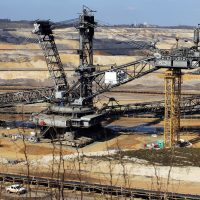Oklahoma Patent of the Month – February 2025
In the world of pipeline commissioning, precision matters. ZEVAC has developed a breakthrough apparatus that redefines how gas lines are purged and filled—eliminating guesswork and minimizing [...]
Mining Case Study
The mining industry, which encompasses activities such as mining, smelting, and metal refining, stands to gain significantly from Research and Development (R&D) tax credits. These tax incentives play a critical role in supporting innovation and technological advancement within the sector. By investing in R&D, companies in the mining industry can improve efficiency, reduce environmental impact, and enhance profitability. R&D tax credits provide a financial boost that enables mining companies to pursue new and improved methods for mineral extraction, ore processing, smelting, sintering, and refining. Innovation is essential for mining companies to remain competitive in an increasingly challenging global market. The R&D tax credit encourages the development of more effective extraction techniques, which can lead to higher yields and lower operational costs. For example, advanced drilling technologies or automated equipment may be developed to access mineral deposits in difficult or remote environments. Additionally, improvements in processing methods can help reduce energy consumption and increase the recovery rate of valuable minerals from raw ore. Smelting and sintering operations, which are traditionally energy-intensive, can also benefit greatly from R&D efforts. Companies investing in cleaner, more efficient smelting technologies not only cut costs but also reduce harmful emissions, aligning with global sustainability goals. Likewise, refining processes can be optimized through research, resulting in higher purity metals, fewer waste byproducts, and improved safety standards. The R&D tax credit acts as a powerful incentive for mining companies to take these technological risks by offsetting a portion of their research expenses. This allows businesses to reinvest in their operations, foster innovation, and maintain a competitive edge. It also supports the development of cutting-edge solutions that address critical industry challenges, such as declining ore grades, environmental regulations, and the need for resource conservation.
Choose your industry
Choose your state







































